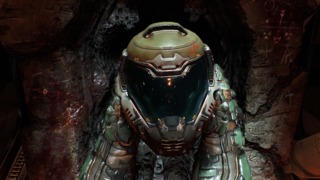
Dave Lang is a veteran game developer best known for his tenure at Midway, founding Iron Galaxy Studios, and tireless work campaigning for the return of Windjammers. You can thank him for bringing back Windjammers--which he, Dave Lang, is solely responsible for--via Twitter.
My name is Dave Lang and I hate Windjammers. Here are my favorite games from 2016:
10. Uncharted 4: A Thief's End
I haven’t finished this yet so I don’t feel the need to write a ton here, but so far it affirms my opinion that Naughty Dog is the only developer that can fill an entire game with moments that make you want to smash a beer over your own head and start chanting “HOLY SHIT!” They are peerless in AAA, no one does what they do.

Well, gosh, Dave, then why is it only #10? Good question, good question. It’s #10 because despite the audacity of the production, Uncharted is starting to feel long in the tooth. The whole arc of: find a clue/fight people on way to validate clue/do big puzzle to find treasure/have enemy sweep in and thwart you when you find it…it’s all kind of played out. I’ve thoroughly enjoyed my time with Uncharted 4 thus far, but I really hope they take the Uncharted game announced at PSX in a radical new direction.
9. Forza Horizon 3
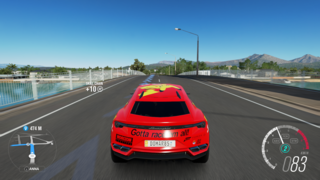
I haven’t played nearly as much of this as I’d like, but from my time with it so far, I’m confident Forza deserves a spot on my list. The first time I played Forza was during the home stretch of my Extra Life Stream, and despite falling asleep approximately 37 times and crashing headlong into 103 trees, I had a lot of fun. It’s the best mix of open-ended, player-driven racing, sixty frames-per-second performance, and open world goodness this side of Burnout Paradise (heck sometimes when I’m playing I can hear DJ Atomica). I have a hard to imagining someone that wouldn’t enjoy this game.
8. Dishonored 2
When I watch people who are good at Dishonored play it, I feel like they are playing a different game than I did. It’s got an insanely high skill-ceiling, and once players get comfortable with the tools at their disposal, it seems like anything is possible.
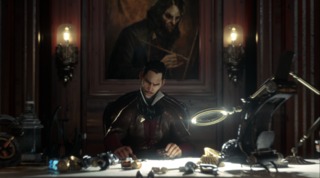
At the beginning of the game the player picks if they are going to play as Corvo (star of the first game) or Emily (his daughter). I chose Corvo, and then largely played it in the same style as I played through the first game (maxed out Blink right away, focused on stealth and agility). And while this was good I feel like I robbed myself of some of the joy of Dishonored. In retrospect I wish I either picked Emily or chose a different play-style for Corvo. In a lot of ways it would have been like playing through a brand new franchise as opposed to a sequel--it would have felt fresher.
But all that being said, I had a blast. Dishonored 2 tells a tale of revenge and redemption, and the sandbox-style nature of the gameplay will almost certainly get the attention of players who enjoy games like Deus Ex, Splinter Cell, or Hitman.
7. Mirror’s Edge Catalyst
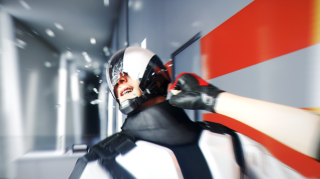
My favorite thing about this series is that it exists at all. The Mirror’s Edge games feel like a concept that an indie might try to execute on, and one that a big publisher like EA would laugh out of a room. Little to no emphasis on guns? Ridiculous. Strong, non-sexualized female lead? Snoozeville. EA should be commended for making this game, and giving DICE a chance to see their experiment take its next leap forward.
If you don’t know anything about Mirror’s Edge, it’s essentially a first-person Parkour game with lots of traversal puzzles and light combat sprinkled about. I must admit I don’t remember that much about the first game--I played it and loved it, but don’t remember any details--but it feels like they’ve dialed back the emphasis on combat for this version. This is good because the combat is still lacking, but it does help break up the pacing in a way I appreciate, and I can only think of one encounter that was outright frustrating.
The visual design of Mirror’s Edge is a strong spot. If you’ve never seen the game in motion check this out. The architecture and palette all scream Modern Utopia, which sits in contrast to what life is like in this mega-city for the average citizen. Corporations run everything, they control citizens’ lives. This contrast is interesting, and they do a good job playing around with this theme over the course of the game.
6. Paragon

Paragon is an odd bird. Not only is it still in preview, but Epic just made sweeping changes to the entire game. The one map (one!) has been completely re-tooled and core mechanics have been tweaked, adjusted, or flat out removed. I need to spend more time with the update, but so far the action feels faster, which is something I’m totally down with.
Making big changes like that takes guts. When we made large changes (arguably not as large as Paragon’s, but still) to kick off Killer Instinct Season 2 & 3, we knew some fans would be mad about it no matter what (“It was better before,” etc.). Angering fans of a free-to-play game can be seen as suicide, because profitability in free-to-play comes down to two numbers: what’s your monthly active users, and how much does the average user spend. Given that, doing something you know will initially shed a (probably non-trivial) percentage of users is very hard to justify.
That is, of course, unless you are listening to the community. Unless you are dialed in to what your best fans want and need, and the team becomes convinced these changes are the best for the long-term health of your game. I love that Epic is confident enough to make these changes. Paragon is most fun I had with a competitive title this year, and I look forward to getting a lot of matches in over break.
5. Gears of War 4
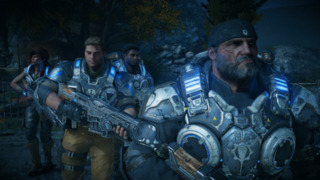
This game came along at just the right time for me. I was ready for a big AAA rollercoaster, and it delivered that in bunches. The game takes place a long time (decades?) after Gears 3, and the world has changed. The Locust are no more, but instead the robotic forces that were built to secure peace on the planet have risen to become the new enemy of the people.
The game does a great job of getting you acclimated with the combat and new systems in the game before dropping the twist on you, at which point you better be up to speed because the difficulty ticks up measurably. It’s kind of hard to overstate how different the feel of the game gets post-twist. The set pieces are bigger, the enemies more numerous and creative in design, and on the higher difficulties you will die (a lot).
The weapon design is great, and the shooting feels fantastic. There’s just the right amount of stick to the crosshairs, and when you snap into and out of cover, you’ll feel that too--it’s chunky. The new Horde Mode is great, but even if you’re not into that the single player is still worth checking out.
4. Quantum Break
Quantum Break isn’t perfect. The shooting and cover systems are loose for my tastes, and while I legitimately enjoyed the video segments that split up the chapters of the game, I think it’s safe to say their inclusion was not essential. How does it overcome these problems for a place on my list? Three main reasons: the amazing set pieces, the main character’s time powers, and the story.
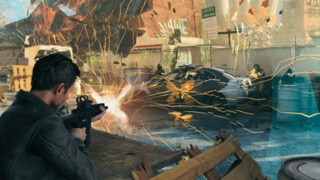
The set pieces that really blew me away in Quantum Break play around with time and destructibility in groundbreaking ways. Whether it’s a train blasting through the wall of a rail station, or a massive fuel tanker falling apart around you, the scale and level of detail of the destruction is unprecedented. When these set pieces break right in front of you, only to reform and re-break for as long as you’re willing to stare at them, you will understand Remedy’s dedication to this feature. When most developers want to destroy something in game, for explanation purposes let’s say a brick wall, they throw up smoke and dust particles, swap the brick wall mesh for a handful of individual brick meshes behind the dust, give the bricks a push in the right direction and call it a day. Remedy couldn’t get away with that for Quantum Break, and the results are amazing to watch. In this regard Quantum Break is one of the best looking games of 2016.
The main character’s time powers take a little too long to build before becoming useful, but once you get about halfway through the game and you’ve got enough tools in the toolbox, the combat situations in Quantum Break flip from being “good enough” to fantastic. The combat encourages frantic darting about, not sitting in one place behind cover, and while this isn’t usually my preferred play style, once I accepted it was the best approach in Quantum Break, I never looked back. Combat is frenetic and fun.
The story in Quantum Break is all about time travel, and predictably confusing because of this. But if you can avoid getting caught up in needing to understand every little detail of the plot, and take time to enjoy the writing by Remedy and the performances by the actors it’s a fantastic sci-fi romp. The FMV shows that bookend the acts of the game are a bit off… I don’t really know how to describe it but they just aren’t TV quality productions. Which isn’t to say they are bad, they aren’t at all, and by Video Game standards they are actually Best In Class. They break up the action into digestible chunks, and round out the story Quantum Break tells. I don’t think they are the revolutionary feature Remedy and Microsoft were hoping for, but that’s not a crime.
3. Oxenfree
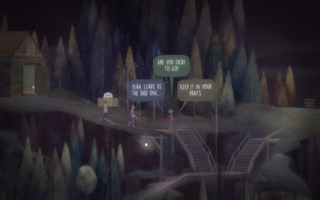
Oxenfree makes this list on the strength of its characters and the story they tell. As an adventure game it’s a throwback in a lot of ways. The player does a lot of walking from point A to point B (then often back to point A, but we’ll let that go for now), talking to characters, and just in general trying to get to the bottom of what the heck is going on with this crazy island. Mechanically, there’s just not a lot to Oxenfree.
Despite this, I spent the first three-quarters of the game being pulled through on the strength of the writing and the realization of the characters, but then there’s This Thing That Happens, and once That Happened, I wasn’t going to set the controller down again until I unraveled the mystery. Oxenfree had its hooks in me.
As I understand it the core creative team spent some time at Telltale, and so I guess it’s not surprising that Oxenfree is one of those “your decisions matter” games, which is good because it goes a long way to amp up the tension and raise the stakes as the story reveals itself. I was genuinely upset at my ending, like “immediately pick up the phone and call a friend to complain about it” mad, and I still loved my time with this game.
2. Inside
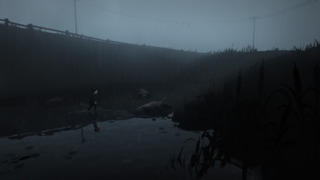
When Inside was announced, I didn’t really know what to make of it. I loved Limbo, but despite the fanfare surrounding its reveal at the Microsoft E3 presser, I wanted more details about the game. So it’s not Limbo 2, but it just looks a lot like it? Is it totally different? Is it in the same world? I didn’t get it. It wasn’t until I got home after E3 and fired up Inside for the first time that I realized all those questions were dumb. I should have just trusted Playdead.
Structurally, the game is a lot like Limbo, but they fixed its biggest problems. There’s far fewer insta-deaths that you have to learn by trial and error. The puzzles are straightforward (except when they are very intentionally not), and in terms of graphics and presentation it’s flawless. I have no idea how a team as small as Playdead made this game.
And then there’s the ending. All I’ll say is that it’s a feat of gameplay engineering and technical artistry, and if you’re remotely interested in seeing what state-of-the-art is in either category you owe it to yourself to play Inside.
1. Hitman

I’ve played every Hitman game. I love the core concept of Hitman. I love IO’s execution on this concept. So given all that, Hitman ending up #1 on my list isn’t a shock, but I hope it will give the following statement credibility: This is, by far, the greatest Hitman game of all time.
Like almost everyone else I was pretty dubious about IO’s desire to deliver Hitman in such a “Games as a Service” way. I’m glad I was proven wrong. IO’s commitment to delivering content updates over the course of the year is amazing. Whether it’s escalation missions, new Challenges or Elusive Targets, there’s always a reason to re-launch Hitman week after week.
And on the subject of Elusive Targets: HOLY SHIT DO I LOVE ELUSIVE TARGETS. If you’re unfamiliar with the concept they are live events that takes place in the game periodically (IO has settled in on a cadence of on for a week/off for a week currently) where you’re given a contract to perform, often with strict stipulations. Once you’ve started the dominos falling in an Elusive Target, you are committed. If you fail to complete your objectives or die, that’s it, it’s over. There’s no saving, no reloading. You never get another shot at that Elusive Target. It’s high-stakes in a way Hitman normally is not, and the fact that IO has tied rewards (even if they aren’t super cool yet, admittedly) just turns up the pressure even more. Sometimes they go amazingly well, and sometimes they don’t. That’s Hitman for ya.
Hitman is GOTY any year. Hitman is GOTY every year.
Also, as an aside: I bet a lot of you are getting an Xbox One for your Holiday of choice. Do me a solid and download Killer Instinct (it’s free!) and buy VIDEOBALL. They are both great, and if you’ve ever yelled “Fuck Dave Lang!” you kind of owe it to me at this point. You also made Windjammers possible, you fucking monsters.
